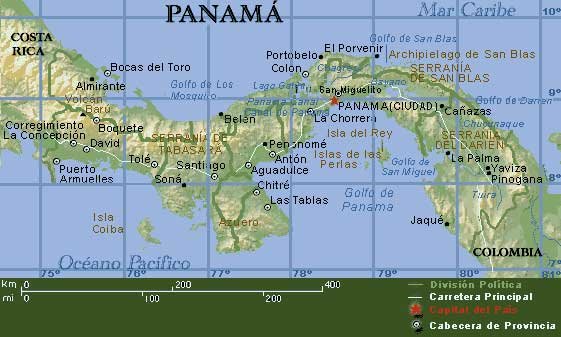 Well, we just finished week 5 and 6 of training (out of 10) and as usual we are tired.
Well, we just finished week 5 and 6 of training (out of 10) and as usual we are tired.Week 5 focuses on Culture. All the trainees travel out to thier region of Panama to experince local culture. Kevin and I traveled to the mountains of Veraguas to visit Areshia, a volunteer who lives and works just a coulple of ridges away from Noah and Karine (who we visited previously).
The first photo is Areshia while teaching in the school. She does a weekly environmental class and we helped her to prepare for and run class that week. We did neglect to think up a rain
 plan....I don´t know what we were thinking of seeing how we are in PANAMA, but we recovered nicely and had a good class despite the rain.
plan....I don´t know what we were thinking of seeing how we are in PANAMA, but we recovered nicely and had a good class despite the rain.This is our group (l-r) Cassandra, Maria our Regional leader, Arishia in the back, Teri in orange, Kevin and me.
In Areshia´s community we contunied our practice in Spanish and lived with host families. n Kevin and I asked to be with seperate families so we would get more individual spanish time...and that was good practice.

We experenced culture by talking to local artisans, one that makes Panama hats, another who makes maracas, and a lady who makes jewlery and uses many local seeds in her jewlery. We also visited a local hostel (well worth the trip to Santa Fe to sit in thier hammocks - see the photo of our group above) and a small food and crafts market. I came close to buying a Panama hat, but it was a tad to big. Darn.
This is Cassandra and Teri modeling the jewlery with local seeds. Teri (in the green) bought the one she is wearing.

We also had a good time watching "The Devil Wears Prada". Imagine 7 people crowed around a laptop in the dark and you get the picture. There is a very funny line in the movie that mentions Peace Corps...so we got a good laugh.
For Technical week we seperated and I headed out to join others in the CEC program to learn about the coastal environment and the issues we will be working on. We stayed with host families in Holly´s community on the South-western end of the Asero Penninsula.

The people there were great and the weather and it was beautiful. The sand on her beach was grey black in color and not developed. Holly works with a very motivated and organized communtiy group on Sea turtle conservation. They collect and protect eggs from people and animals until they hatch. We walked the beach looking for turtles every night, but did not see any as it is early in the year still. We
had classes on sea turtles, mangroves, eco-tourism, youth leadership development, and how to build a Lorina stove.
A very large percentage of Panamanians cook with fagones...which is really just a pot sitting on three large rocks over a fire. Even those people who have and use a gas range still use a fagone when they cook for large numbers of people or traditional foods. Well you can imagine that this takes a lot of wood for the cooking.
Loriana stoves are earthen stoves made with easy to obtain materials - clay, sand, grass, and a zinc pipe for a chimney. The benifits of a loraina stove are that they burn about 30% less wood, they divert the smoke from the cook, they contain and focus the heat onto the pot, and they can use the same flame to heat more than one pot. You can also bake in them after cooking if you are real good. A Loraina
 stove can last 10-20 years with proper care.
stove can last 10-20 years with proper care.With that said they are labor intensive to build. The steps can be seem in the photos.
- 1. You collect and sift the soil and sand. You have to check the soil content to be sure that you mix things in the right purportions. Sifting soil took FOREVER because the soil was damp...nothing dries fast here.
2. After mixing the parts together with just the perfect amount of water you put it into the mold and tamp it down hard...beat the snot out of it until you have to work to dent it with your finger.
3. Repeat steps 1 and 2 until the mold is full...8 hours or mor of work.
 4. Remove the mold and pray it looks good...it will but at that point you have soo much work in it you can´t help but pray a bit.
4. Remove the mold and pray it looks good...it will but at that point you have soo much work in it you can´t help but pray a bit.
5. Carve out the openings and tunnels for the wood, fire, pots, and chimney. Use water to smooth all surfaces.
6. Let dry for 30 days. Check daily for cracks and fix them. Do a test fire on day 20 to check for major issues before it is too dry to fix.
7. Use and maintain your stove....tell all your friends and have a party to build on for someone else.



No comments:
Post a Comment